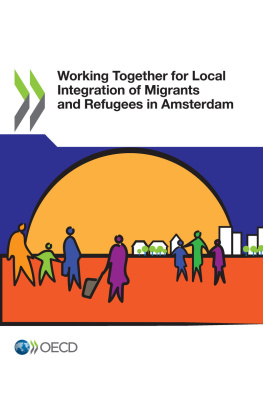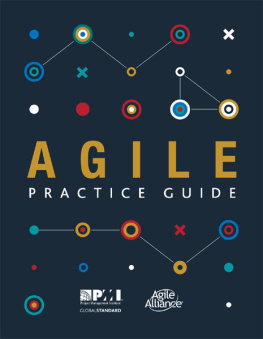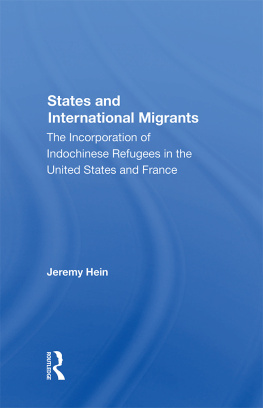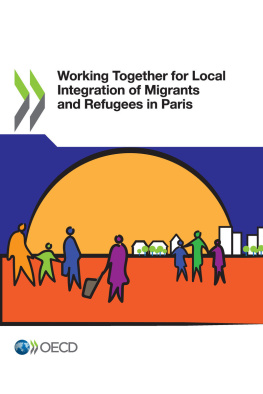An OECD-EU initiative: A territorial approach to migrant integration: The role of local authorities
This publication on Migrant Integration in Amsterdam was produced by the OECD as part of a larger study on A Territorial approach to migrant integration: The role of local authorities supported by the European Commission.
This study takes stock of the existing multi-level governance frameworks and policies for migrant and refugee integration at the local level in nine large European cities: Amsterdam, Athens, Barcelona, Berlin, Glasgow, Gothenburg, Paris, Rome and Vienna and a small city in Germany (Altena) thanks to the support of the German Ministry for Economic Affairs and Energy. It also builds on information collected from other 61 European cities, including Utrecht, through an ad-hoc survey and on a statistical database on migrant outcomes at regional (TL2) level. This study resulted in the Working together for local integration of migrants and refugees Report , approved by the OECD Committee for regional development policy (RDPC) in December 2017 (OECD, 2018 Forthcoming [1] ).
The focus of this study is on migrants, meaning a wide range of different groups of people with different reasons for leaving their countries of origin: humanitarian, economic, family or study, among others. The target group includes newcomers, from EU and non-EU countries, as well as migrants who settled in the cities many years ago and native-born with at least one migrant parent, depending on the statistical definition used by the city. Given the recent increase in the arrival of refugees and asylum seekers to Europe, particular attention is paid to these groups throughout the case studies.
Cities in the sample have different track records in integrating migrants. The study looks at updates to the governance mechanisms in the wake of the recent influx of asylum seekers and refugees, in order to improve the local reception of migrants and the capacity to integrate them into the society. Conversely, it also investigates opportunities to extend some of the services recently established for newcomers to long-standing migrant groups.
The point of departure for the overall study is the observation that in practice integration takes place at the local level. Cities are focal spots of refugee and migrant reception and integration processes: in 2015, close to two-thirds of the foreign-born population in the OECD lived in urban areas (OECD, 2018 Forthcoming [1] ).
The ambition of this series of case studies is to identify how cities have responded to these objectives. It aims to address an information vacuum: beyond the dominant literature on international and national evidence about migrant movements and integration, several studies exist about the local dimension and impact of migration. However, they do not explore the governance factor attached to it. In the view of partner cities and international organisations (UNHCR, etc.), multi-level governance can be an important explanatory factor of the performance of migrant integration policies. Even though migration policies are the responsibility of the national government, the concentration of migrants in cities, and particularly in metropolitan areas (Brezzi et al., 2016), has an impact on the local demand for work, housing, goods and services that local authorities have to manage. Local authorities act within a multi-level budgetary and administrative framework, which limits or adds responsibilities in dealing with migrant-specific impacts in their territory. As such, this work first aims at understanding the way cities and their partners address migrant integration issues. While it DOESNT strive at this stage to evaluate the impact of the whole set of local public actions, it compiles qualitative evidence of city policies, decision making and evaluation processes across selected multi-level governance dimensions. These dimensions were selected according to the multi-level governance gaps analysis developed by the OECD (Charbit, 2011; Charbit and Michalun, 2009). Statistical data have been collected from all of the cities on the presence and outcomes of migrant and refugee populations.
As a result of this comparative work, and in collaboration with partner cities and organisations, the OECD compiled a list of key objectives to guide policy makers in integrating migrants with a multi-level perspective. The Checklist for public action to migrant integration at the local level, as included in the Synthesis Report (OECD, 2018 Forthcoming [1] ) is articulated according to 4 blocks and 12 objectives. The four blocks cover: 1) institutional and financial settings; 2) time and proximity as keys for migrants and host communities to live together; 3) enabling conditions for policy formulation and implementation; and 4) sectoral policies related to integration: access to the labour market, housing, social welfare and health, and education.
This study first provides insight on the citys migration background and current situation. It then gives a description of the actions implemented following the framework of the Checklist for public action to migrant integration at the local level.
The objective is to allow cities to learn from each other and to provide national and supranational decision makers and key partners of local integration policies with better evidence to address the major challenges ahead in this field and to adopt appropriate incentive schemes.
References
[1] OECD (2018 Forthcoming), Working together for integration of migrants and refugees at the local level , OECD Publishing.















